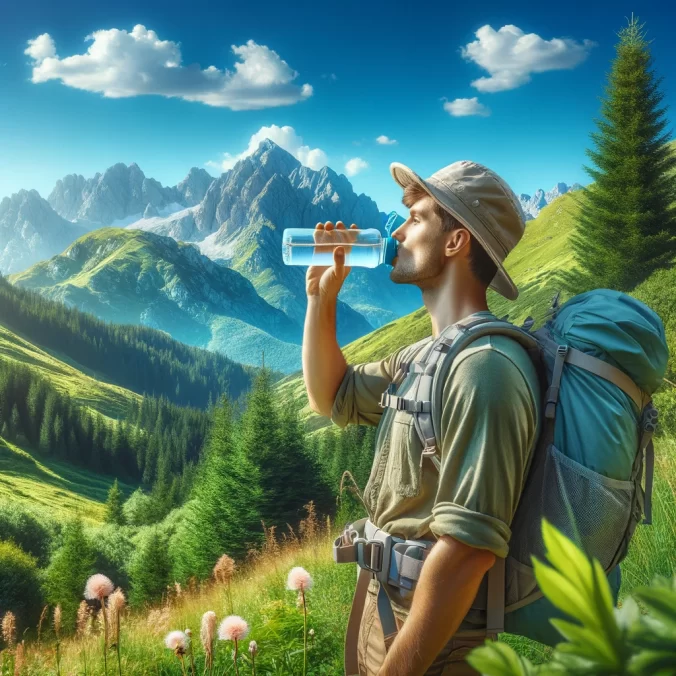Hydration is crucial during any outdoor activity, whether you’re backpacking in arid deserts or snowshoeing in winter landscapes. The combination of physical exertion and dry conditions can quickly lead to dehydration. Understanding how to effectively prevent and manage dehydration is essential for any adventurer. Here, we outline key symptoms of mild to severe dehydration and provide practical advice on how to stay hydrated.
Disclaimer
While I do have training in wilderness first aid, we are not medical professionals. If you or anyone in your party exhibits severe dehydration symptoms or if you’re unsure about a health condition, seek medical help immediately or dial 911.
Symptoms of Mild to Moderate Dehydration
- Dry, sticky mouth
- Headache
- Thirst
- Reduced urine output
- Dry skin
- Dizziness or lightheadedness
- Fatigue – children may be noticeably less active
- Constipation
Symptoms of Severe Dehydration
- Intense thirst
- Rapid heartbeat and breathing
- Extremely dry mouth, skin, and mucous membranes
- Significant irritability or confusion in adults; fussiness or sleepiness in children
- Minimal or no urination – urine that is dark yellow or amber
- Sunken eyes
- Dry, shriveled skin that doesn’t rebound when pinched
- Low blood pressure
- Absence of tears when crying
- Fever, delirium, or unconsciousness in extreme cases
Practical Hydration Tips
- Pre-Hydration: Drink plenty of fluids before you start your adventure.
- Hydrate During Activities: Continue drinking water or electrolyte beverages during your activity. Avoid caffeinated, alcoholic, and sugary drinks.
- Post-Activity Hydration: Replenish your body with fluids after your activities conclude.
- Healthy Snacking: Opt for fresh fruits and vegetables over dry snacks like nuts or chips which can increase your need for water.
- Appropriate Clothing: Wear suitable clothing for the weather and activity to help manage sweat and maintain body temperature.
- Rest and Shade: Take breaks in shaded areas to rest and hydrate.
Simple Tests for Dehydration
- Skin Pinch Test: Pinch the skin on the back of your hand; if it doesn’t quickly return to normal, you might be dehydrated.
- Urine Color Test: Remember the phrase “Clear and Copious.” Well-hydrated urine should be clear or light yellow. Dark yellow or orange urine is a warning sign and may necessitate medical attention.
In our upcoming posts, we will dive deeper into recognizing and treating heat-related illnesses such as heat exhaustion and heat stroke. Staying hydrated is the first line of defense against such conditions and is critical for safe outdoor adventures. Remember, if you’re unsure about your health or someone else’s on the trail, it’s always safer to consult a medical professional or call 911. Stay safe and hydrated on your next outdoor adventure!




Leave a Reply